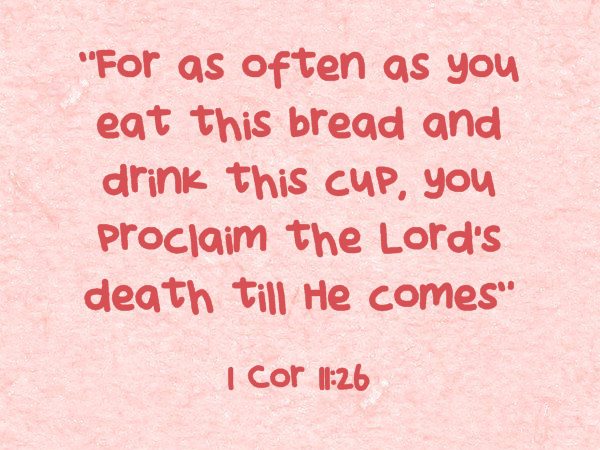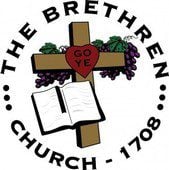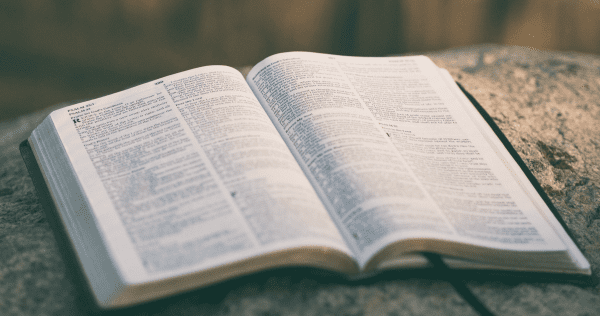What can we learn from the Last Supper? What is it called that? What significance does this have with the church today?
The Last Supper
The Bible never calls the Lord’s Supper the “Last Supper.” That is a human invention and likely comes from the famous painting by Leonardo da Vinci where the disciples were seated with Christ and partaking of the bread and the wine during the Passover Meal. If anything, we could call it “The Passover Meal” because that’s what it was. There are so many misconceptions about this meal that my intent is to clear up as many as possible and see what we can learn from this very sobering experience.
The Passover Meal
The Passover Meal was one of the most moving events in the Bible. In only a few hours, Jesus would be betrayed and turned over to the authorities and tried in an illegal court, testified against by false witnesses, and crucified for no real crime, as He was sinless and even Pontius Pilate said that he could find no fault in the Man. We read the account of the Passover Meal in Matthew 26:26-29:
“While they were eating, Jesus took bread, and when he had given thanks, he broke it and gave it to his disciples, saying, “Take and eat; this is my body. Then he took a cup, and when he had given thanks, he gave it to them, saying, “Drink from it, all of you. This is my blood of the New Covenant, which is poured out for many for the forgiveness of sins. I tell you, I will not drink from this fruit of the vine from now on until that day when I drink it new with you in my Father’s kingdom.”
Prior to the Passover Meal, Jesus kept saying over and over again in the gospels that His hour had not yet come but now it had. Luke 22:15 adds that Jesus fervently desired to eat this Passover meal with them before He suffered. He gave them a clue that was going to be the last meal for a long time since He said that He would not “eat it until it is fulfilled in the kingdom of God” (Luke 22:16). I believe that they were afraid to ask Him what He meant.
The Cup of Suffering
Notice that just before the bread and wine, they were partaking in a meal. This matches what some call the “love feast” which seems to be the idea behind Paul’s writing about this meal in 1 Corinthians chapter 11. When Jesus took the cup He stated that the cup represented His blood that was about to be shed for them and for all those who would later believe and for those Old Testament saints even though they had been saved by faith. The cup at the meal and the cup that He prayed to the Father to remove that represented all the sins of humanity for all time past, present, and the future which means into all eternity, is strikingly similar. That is a lot of sin. Imagine the sinless God-Man Jesus Who had never sinned for all time and now He was going to drink down the cup of sins representing the bottom dregs of the worst, most despicable and heinous crimes and vile passions of the worst of all humans that have ever lived. No wonder it was written, “And going a little farther he fell on his face and prayed, saying, “My Father, if it be possible, let this cup pass from me; nevertheless, not as I will, but as you will” (Matt 26:39).
His Body Broken for Our Sake
First of all, He takes the bread and gives thanks for it. Then “he broke it and gave it to His disciples” indicating that His body was bruised, beaten, and broken for their and our sake (Isaiah 52; 53; Psalm 22). He told the disciples and tells those who are His own today to “Take and eat, this is my body.” Like the manna from heaven that came down from heaven to sustain and give life to Israel in the Wilderness, this broken-at-our-expense bread sustains us and gives us life, but it’s superior than what Israel ate for this bread gives us eternal life. Not the unleavened bread or wafers, but Jesus literal body was broken for our sakes, a holy unleavened bread.
Next, “he took a cup, and when he had given thanks, he gave it to them, saying, “Drink from it, all of you. This is my blood of the New Covenant, which is poured out for many for the forgiveness of sins.” This pictures the shed blood of Christ. The blood covered sins in the Old Testament but could never take them away (Heb 10:4). The animal blood only covered sins (Lev 17:11) but the Lamb of God’s blood takes away the sins of the world (John 1:29). There’s a huge difference between covering sins and having them removed permanently because the Old Testament sacrifices had to be repeated over and over again but Jesus entered once and only one time and for all time with His own blood (Heb 9:12, 10:10).
Paul’s Communion Commands
Some call it Communion, others the Lord’s Supper, and others still call it the Sacraments, while the Catholic Church calls it the Eucharist which is from the Greek noun “eucharistia” meaning “thanksgiving.” In 1 Corinthians 11:23-25 Paul follows much of what the Lord and the disciples did for the Passover meal:
“For I received from the Lord that which I also delivered to you: that the Lord Jesus on the same night in which He was betrayed took bread; and when He had given thanks, He broke it and said, “Take, eat; this is My body which is broken for you; do this in remembrance of Me.” In the same manner He also took the cup after supper, saying, “This cup is the new covenant in My blood. This do, as often as you drink it, in remembrance of Me.”
Paul writes that he “received [this] from the Lord” and now he has “delivered [it] to [them]” which may mean that he received these instructions directly from God for the churches that he planted. We see that it is close to that which was observed in the gospels. Then Paul adds a proclamation to this by writing “For as often as you eat this bread and drink this cup, you proclaim the Lord’s death till He comes” (1 Cor 11:26). Here we are actually proclaiming, to ourselves and to the world, that the Lord’s death, dying for sinners, is to be done “till He comes.” In other words, it is commanded and we are also proclaiming His death for our sakes.
Eating in an Unworthy Manner
Paul gives a final warning to those who take this as just another meal. Many of the members of the church at Corinth used it for a party and even got drunk, while others gorged themselves leaving nothing for the poorer members of the church who ended up going hungry during the love feast. That’s why he wanted them to wait for one another before beginning (1 Cor 11:33). Paul was angry at this and tells them that
“Therefore whoever eats this bread or drinks this cup of the Lord in an unworthy manner will be guilty of the body and blood of the Lord. But let a man examine himself, and so let him eat of the bread and drink of the cup. For he who eats and drinks in an unworthy manner eats and drinks judgment to himself, not discerning the Lord’s body. For this reason many are weak and sick among you, and many sleep. For if we would judge ourselves, we would not be judged” (1 Cor 11:27-31).
What a serious warning that we can eat it unworthily and some have did this and “fallen asleep” (died) while others are weak and sick for that reason. Everyone must discern the Lord’s body or understand how somber of an occasion this was and just how high the price was for Christ. We should examine ourselves and see just how much our sins and those we still commit cost Him.
Conclusion
If you are not part of the Body of Christ, many churches do not allow you to participate in the Sacraments, Eucharist, or Communion, but it is for your own good (1 Cor 11:27-31). If you are not a member of a church, I strongly suggest you join up with the Body of Christ, the church that Jesus said the gates of hell (death) would not prevail against it (stop it). We are commanded to not forsake the assembling of ourselves (Heb 10:25) and that we are to partake in Sacraments, Eucharist, or Communion regularly. If not, then you are disobeying a direct, imperative command from the Lord and from Paul, who received this from the Lord.
Another Reading on Patheos to Check Out: What Did Jesus Really Look Like: A Look at the Bible Facts
 Article by Jack Wellman
Article by Jack Wellman
Jack Wellman is Pastor of the Mulvane Brethren church in Mulvane Kansas. Jack is also the Senior Writer at What Christians Want To Know whose mission is to equip, encourage, and energize Christians and to address questions about the believer’s daily walk with God and the Bible. You can follow Jack on Google Plus or check out his book Blind Chance or Intelligent Design available on Amazon












